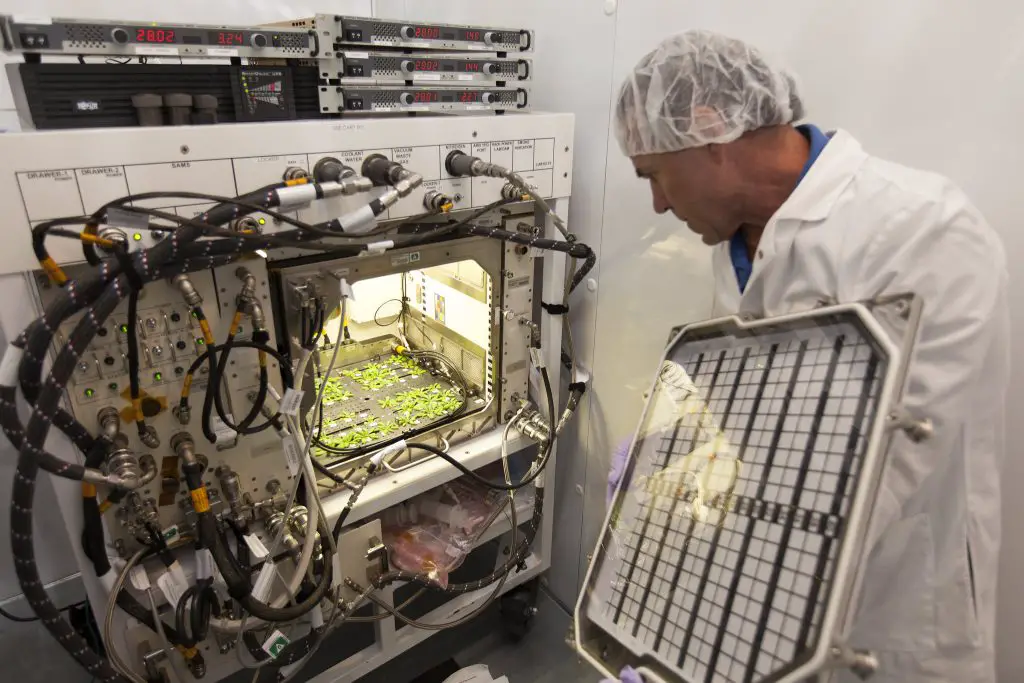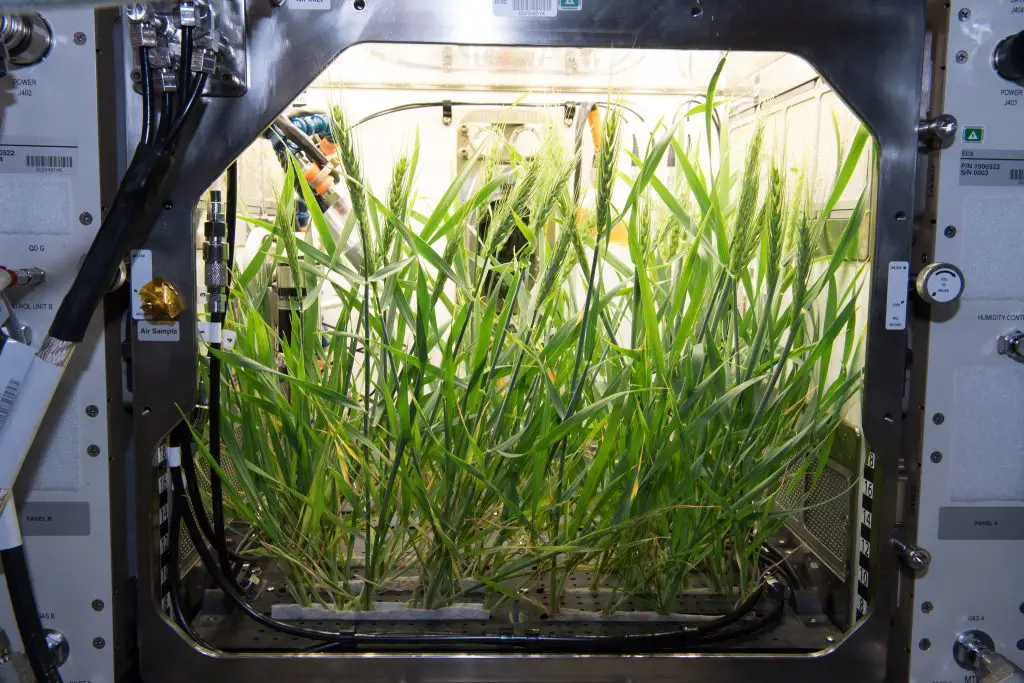Microgravity is the condition in which the force of gravity is significantly reduced. In microgravity, objects float and appear weightless.
Microgravity is an intriguing phenomenon that occurs when the force of gravity is minimized, resulting in a weightless environment. This unique condition enables objects to float effortlessly, defying the pull of gravity. Microgravity is experienced in various situations, such as during space travel, parabolic flights, or freefall environments.
Understanding microgravity is crucial for scientists and researchers in multiple fields, including aerospace engineering, physics, and biology. The absence of normal gravitational forces in microgravity allows for the study of fundamental scientific principles and the exploration of new technologies. This article will delve further into the concept of microgravity, its impact on living organisms, and its significance in space exploration and scientific research.

Credit: www.nasa.gov
Introduction To Microgravity
Microgravity is a fascinating concept that has captured the attention of scientists and researchers for many years. It refers to the condition in which gravitational forces are greatly reduced, resulting in a state of apparent weightlessness. This phenomenon occurs when an object is in freefall or orbit around another object, such as the earth or the international space station.
Definition And Explanation Of Microgravity:
- Microgravity is characterized by a near-zero gravity environment, where the force of gravity is significantly weaker than on the surface of the earth.
- In this state, objects and individuals experience a sensation of weightlessness, as they float freely and are not subjected to the typical downward force of gravity.
- Microgravity can also be thought of as a constant state of falling, where inertia keeps objects in motion around a central mass, creating the illusion of weightlessness.
Importance And Relevance Of Microgravity Research:
- Microgravity research plays a vital role in our understanding of various scientific disciplines, including physics, biology, and materials science.
- By studying the effects of microgravity on natural and artificial systems, scientists can gain insights into fundamental laws of nature and the behavior of matter under unique conditions.
- Microgravity research has proven invaluable for the advancement of space exploration, as it allows scientists to test and refine technologies that are crucial for long-duration space missions, such as those to other planets or distant celestial bodies.
Microgravity is a fascinating phenomenon that offers a multitude of research opportunities in various scientific fields. By studying the effects of microgravity, scientists can delve deeper into the mysteries of the universe and develop innovative solutions for space exploration and beyond.
What Is Microgravity?
Microgravity is a fascinating concept that captures the curiosity of both scientists and everyday people. So, what exactly is microgravity? In this section, we will delve into the explanation of microgravity in space, compare it to gravity on earth, and explore how it affects human bodies and physical objects.
Explanation Of Microgravity In Space
- Microgravity refers to the condition in which the force of gravity is greatly reduced, resulting in an environment where objects and individuals experience a relative absence of weight.
- This phenomenon occurs when an object, such as a spacecraft, is in a state of freefall around a celestial body, like earth or another planet.
- In this state, the object and everything inside it are continuously falling towards the celestial body but remain in constant motion around it, giving the perception of weightlessness.
Comparison To Gravity On Earth
- On earth, gravity keeps us grounded and gives us a sense of weight. It pulls objects downward and influences our daily activities.
- In microgravity, the force of gravity is significantly weaker, making objects and individuals appear weightless. This break from the gravitational pull we’re accustomed to can lead to unique experiences and challenges.
How Microgravity Affects Human Bodies And Physical Objects
- Human bodies undergo certain changes in a microgravity environment. Without the constant force of gravity, bones and muscles experience reduced stress and workload, leading to bone loss, muscle atrophy, and decreased cardiovascular function.
- In microgravity, bodily fluids shift towards the upper body, causing facial puffiness and reduced leg volume.
- Physical objects in microgravity behave differently as well. Fluids form spheres due to surface tension, flames produce differently shaped flames, and particles remain dispersed rather than settling out.
By understanding the explanation, comparison, and effects of microgravity, we can gain insight into the unique conditions that astronauts and scientific experiments face in space. The study of microgravity not only expands our knowledge of the universe but also presents exciting challenges and possibilities for future space exploration and research.
Studies And Experiments In Microgravity
Microgravity is a fascinating concept that has captivated scientists and researchers for decades. This state of apparent weightlessness occurs when gravitational forces are greatly reduced, allowing for unique studies and experiments to take place. In this section, we will delve into the world of microgravity research, with a particular focus on the studies and experiments conducted on the international space station (iss), as well as notable efforts in biology, physics, and materials science.
Let’s explore the exciting discoveries and benefits stemming from these endeavors.
Research Conducted On The International Space Station (Iss)
- The iss serves as an invaluable platform for conducting research in microgravity, enabling scientists to carry out experiments that would be impossible on earth.
- Microgravity research conducted on the iss has the potential to advance our understanding of human health, improve technologies, and greatly contribute to various scientific disciplines.
- The effects of microgravity on the human body, such as bone density loss and muscle atrophy, are important considerations for long-duration space missions, and ongoing studies on the iss aim to counteract these effects.
Examples Of Experiments In Biology, Physics, And Materials Science Conducted In Microgravity
- In the field of biology, microgravity provides a unique environment for studying the effects of altered gravity on living organisms. Experiments have explored topics such as gene expression, cell growth, and the behavior of microorganisms in space.
- Physicists have utilized microgravity to conduct experiments that examine fundamental principles of physics, ranging from fluid dynamics and combustion to the behavior of fluids, crystals, and particles.
- Materials science experiments conducted in microgravity have yielded valuable insights into the formation and behavior of materials without the interference of gravity. This research has the potential to revolutionize various industries, including manufacturing and aerospace.
Discoveries And Benefits Of Microgravity Research
- Microgravity research has uncovered significant findings in diverse areas. For instance, studying how fluids behave in microgravity has led to the development of more efficient cooling systems for electronics.
- The absence of gravity in space allows for the growth of high-quality crystals, which has facilitated the discovery of new materials and improved drug design.
- The knowledge gained from microgravity research not only deepens our understanding of the universe and the laws of physics, but it also has practical applications in fields such as medicine, materials science, and engineering.
- The benefits of microgravity research extend beyond earth, as the knowledge gained can help advance space exploration and potentially pave the way for future interplanetary missions.
Through the various studies and experiments conducted in microgravity, scientists have been able to unlock the secrets of the universe, uncover innovative technologies, and improve our lives here on earth. The allure of microgravity continues to captivate researchers worldwide as they push the boundaries of scientific exploration in the weightless environment of space.
Applications Of Microgravity
Microgravity refers to a state in which the force of gravity acting on an object is greatly reduced or eliminated altogether. This unique environment, whether experienced in space or through specially designed facilities on earth, offers an array of fascinating opportunities for research and technological advancement.
One such area of exploration involves the applications of microgravity, which promise to revolutionize various fields ranging from medicine to manufacturing. Let’s delve into these exciting frontiers and uncover the immense potential they hold.
Medical Advancements And Drug Development In Microgravity Conditions
- Conducting medical research in microgravity allows scientists to study the effects of altered gravitational forces on the human body, leading to significant breakthroughs in understanding various physiological processes.
- Microgravity enables the growth of three-dimensional cell cultures that more accurately mimic human tissues, offering valuable insights into disease progression and potential treatment options.
- Microgravity conditions stimulate the production of higher-quality crystals, which assists pharmaceutical research and development by enabling clearer visualization of molecular structures.
- The absence of buoyancy-driven convection in microgravity allows for more precise control over cell and tissue cultures, enhancing the accuracy of experiments and testing of potential therapeutics.
Potential Use Of Microgravity In Manufacturing And Production Processes
- Microgravity provides an environment free from sedimentation, buoyancy, and convection, making it ideal for the production of advanced materials with improved strength, durability, and other desirable properties.
- The absence of gravity-driven forces allows for the formation of defect-free alloys and ceramics, contributing to the development of enhanced manufacturing processes for a wide range of industries.
- Microgravity can facilitate the creation of complex structures and intricate designs that are otherwise challenging to produce on earth due to gravitational constraints.
- The unique conditions of microgravity support advancements in 3d printing, enabling the fabrication of intricate objects with greater precision and minimal material waste.
Future Possibilities And Implications Of Microgravity Technology
- Microgravity research has the potential to advance our understanding of fundamental physics principles, opening up new avenues for discoveries and technological progress.
- Exploring the possibilities of long-duration space travel and colonization necessitates leveraging microgravity technology and developing self-sustaining systems that can mitigate the effects of reduced gravity on human health and well-being.
- Microgravity can potentially revolutionize space manufacturing and resource utilization, enabling the extraction and processing of valuable materials from celestial bodies.
- The findings and innovations resulting from microgravity research can have significant terrestrial applications, revolutionizing industries such as energy, transportation, and telecommunications.
As microgravity continues to captivate the imagination of scientists and researchers across the globe, the future holds boundless opportunities for innovation and advancements that will shape our understanding of the universe and revolutionize various aspects of life on earth.
Frequently Asked Questions On What Is Microgravity
What Is Microgravity And How Does It Affect Astronauts?
Microgravity refers to the condition where gravity appears to be very weak or nonexistent. In space, this occurs when objects experience a continuous freefall around earth or other celestial bodies. Astronauts in microgravity have weakened muscles, reduced bone density, and changes in their cardiovascular system due to the lack of gravity’s usual effects on the body.
How Is Microgravity Simulated On Earth?
To simulate microgravity on earth, various methods are employed. This includes using parabolic flight, where an aircraft performs a series of maneuvers to create short bursts of weightlessness. Another method is using water immersion, where astronauts are trained underwater to simulate the sensation of floating.
Additionally, drop towers and rotating centrifuges are used to mimic certain aspects of microgravity.
What Research Is Conducted In Microgravity?
Microgravity provides a unique environment for various research experiments. Scientists conduct experiments to study the effects of microgravity on the human body, such as bone loss and muscle atrophy. They also investigate how plants grow, how fluids behave, and how combustion processes differ in microgravity.
The findings contribute to advancements in space exploration, medicine, and other scientific disciplines.
How Does Microgravity Affect Plant Growth?
In microgravity, plant growth is altered due to the absence of gravity’s influence. Roots may grow in different directions, searching for nutrients and water. Additionally, plants may exhibit elongated stems and altered leaf shapes. Researchers are studying these effects to understand how to grow plants efficiently in space for future long-duration missions and potential colonization efforts.
Can Microgravity Be Harmful To The Human Body?
While microgravity has detrimental effects on the body, such as muscular and bone loss, it is not inherently harmful in the short term. Astronauts undergo rigorous training and exercise routines to mitigate these effects during space missions. However, extended exposure to microgravity can lead to significant health issues, which is why scientists and astronauts are continually researching methods to counteract and minimize its negative impacts.
How Is Microgravity Used In Scientific Experiments?
Microgravity offers a unique environment for various scientific experiments. It enables researchers to study complex phenomena that are not easily observable on earth due to the constant influence of gravity. This includes the behavior of fluids, combustion processes, crystal growth, and the effects of microgravity on living organisms.
These experiments provide valuable insights and advancements in multiple fields of study.
Conclusion
Microgravity is a fascinating concept that has far-reaching implications for space exploration and our understanding of the universe. By experiencing a state of apparent weightlessness, astronauts are able to conduct experiments and investigations that would not be possible on earth.
The effects of microgravity on the human body, such as muscle and bone loss, also have important implications for long-duration space travel. Understanding microgravity is crucial for enabling the development of technologies and strategies to support future space missions and potentially even life on other planets.
By continuing to study and research microgravity, scientists and engineers can unlock new insights into the fundamental laws of physics and improve our understanding of the cosmos. In the future, as space exploration continues to expand, microgravity will remain a key area of focus, providing a window into the unknown and opening doors to exciting discoveries.



